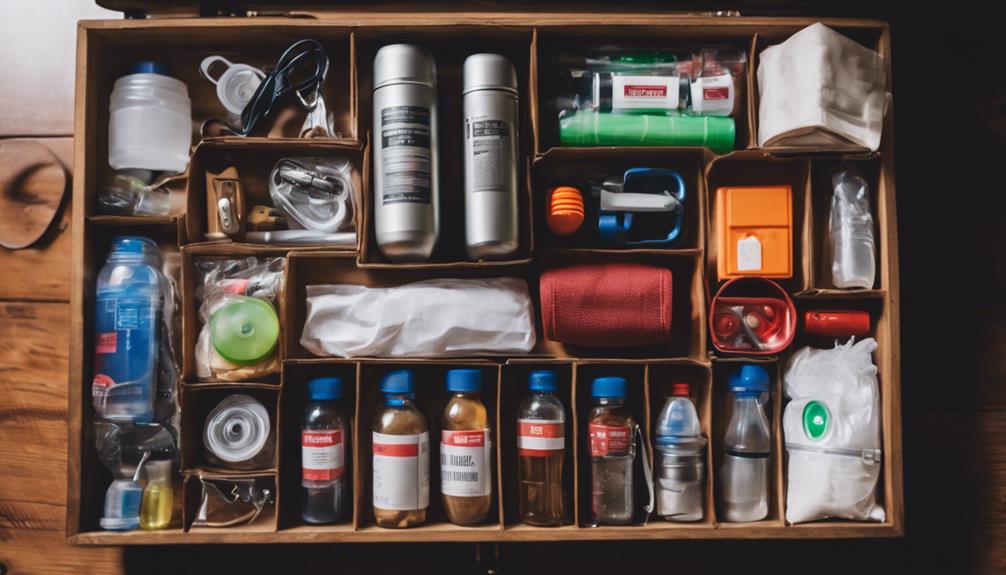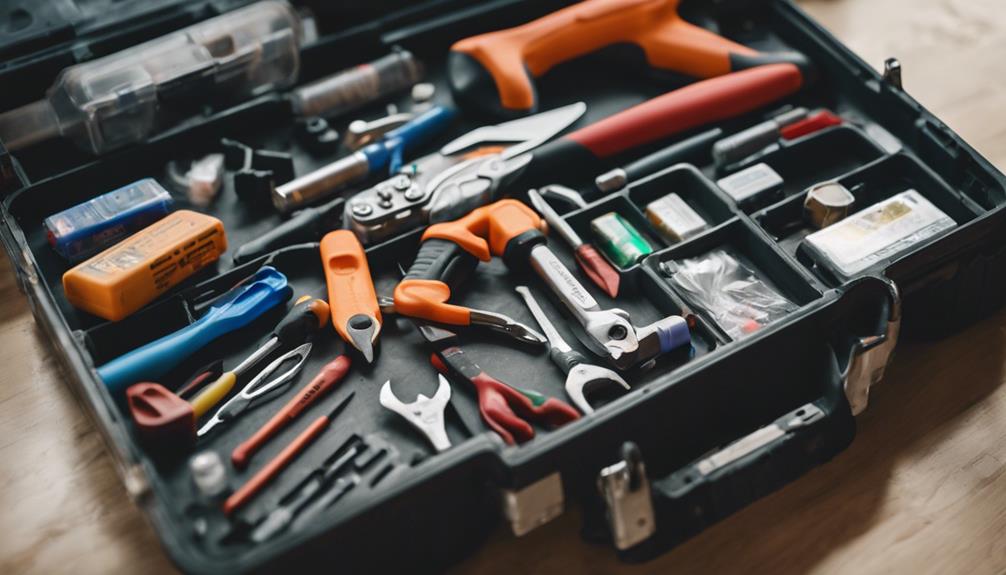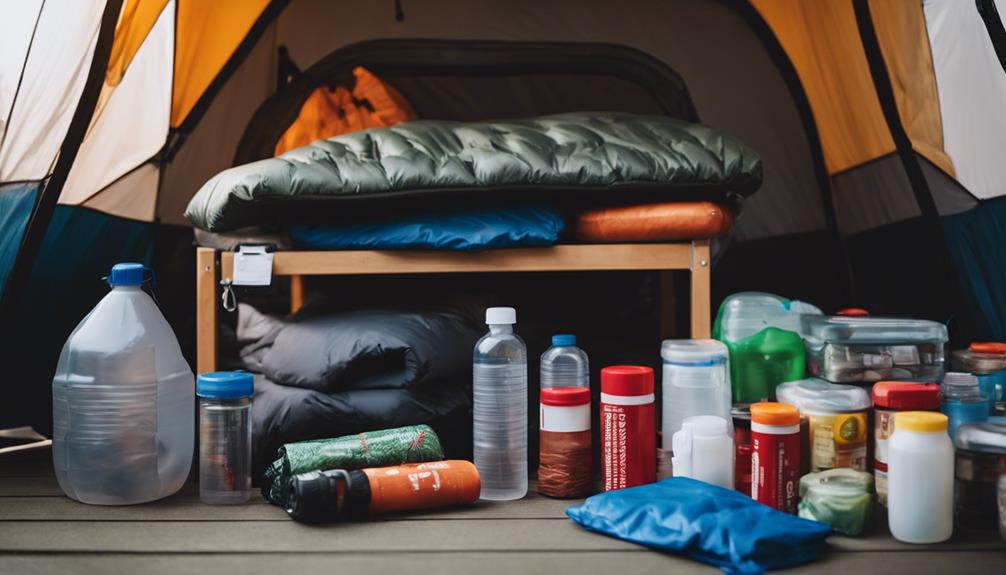In order to get your apartment ready for unforeseen emergencies, begin by putting together an emergency kit containing essential supplies. Ensure you have a three-day supply of non-perishable food and one gallon of water per person per day on hand. Don’t forget to include a first aid kit, flashlights, extra batteries, and sanitation items. Remember to pack personal hygiene products and prescription medications as well. Additionally, it’s a good idea to have sleeping bags, warm blankets, and rain gear for added protection. Make sure to regularly check and update your supplies. Being prepared will give you peace of mind knowing you’re ready for anything that may happen. Find more tips on effective preparedness here. It’s also important to have a communication plan in place for emergencies. This could involve having a list of emergency contacts, a portable phone charger, and a battery-powered or hand-crank radio. Stay informed about potential disasters in your area and establish a designated meeting place for your household. Lastly, while it is crucial to prepare for unexpected emergencies, make sure to also take time for self-care and relaxation. Consider including elements of luxury spa retreats in your emergency preparedness plan, such as calming essential oils or soothing music, to help reduce stress during difficult times.
Key Takeaways
- Create an emergency kit with essential supplies including food, water, first aid items, and hygiene products for at least three days.
- Store reliable flashlights, batteries, and a multi-tool to navigate and communicate effectively during power outages.
- Ensure your apartment has a stocked first aid kit that includes medications, band-aids, and hygiene items for health emergencies.
- Maintain a supply of warm blankets or sleeping bags and waterproof gear to protect against harsh weather during a disaster.
Understanding Emergency Kits

An emergency kit is your lifeline during unpredictable situations, ensuring you have essential supplies ready when disaster strikes. It's a collection of items designed to sustain you during crises like hurricanes, floods, or tornadoes.
Preparing an emergency kit is vital, especially in apartment living where storage space may be limited. You want to be proactive, not reactive, which means gathering these supplies before disaster looms.
Think of your kit as a buffer against chaos, providing food, water, and tools that empower you to handle the unexpected. The goal is to support yourself for several days when help may not be immediately available.
Being prepared can make all the difference in how you cope with an emergency situation.
Must-Have Emergency Supplies
Gathering must-have emergency supplies guarantees you're ready to face any disaster with confidence and resilience.
Start by stocking a minimum three-day supply of non-perishable food and one gallon of water per person per day.
Don't forget sanitation supplies like toilet paper and cleaning items, as well as face coverings for health safety.
Include a first aid kit for medical emergencies, along with essential medications and personal hygiene items.
A flashlight, batteries, and a multi-tool will help you navigate challenges, while a battery-powered radio keeps you informed.
Finally, consider lightweight purification tools to make certain safe drinking water.
Essential Hardware Tools

Essential hardware tools are crucial for maneuvering through emergencies and ensuring you can respond effectively to any situation that arises.
Start by keeping a reliable flashlight and headlamp handy, as power outages often accompany disasters. Stock up on extra batteries to keep your devices running.
A multi-tool can be invaluable, allowing you to tackle various tasks, from repairs to opening cans.
Don't forget a sturdy pair of work gloves for protection while handling debris or performing repairs.
A battery-powered or hand-crank radio helps you stay informed about unfolding situations.
Health and Wellness Essentials
In addition to hardware tools, having health and wellness supplies ready can make a significant difference during emergencies. You'll want to guarantee that your first aid kit is stocked and includes items like band-aids, antiseptic wipes, and gauze. Don't forget to include a thermometer to monitor health and prescription medications you might need. Below is a quick reference table to help you prioritize your health essentials:
| Item | Purpose | Quantity |
|---|---|---|
| First Aid Kit | Treat injuries and ailments | 1 |
| Prescription Medications | Manage chronic conditions | As needed |
| Personal Hygiene Items | Maintain cleanliness and comfort | Several |
Shelter and Protection Equipment

Having the right shelter and protection equipment can keep you safe and warm during a disaster.
Start with a sleeping bag or a warm blanket for each person to guarantee you stay cozy.
Pack rain gear like waterproof coats and hats to shield you from inclement weather.
Waterproof matches are essential for starting fires, providing warmth and cooking options.
Don't forget gloves to protect your hands from the cold and harsh elements.
Finally, consider plastic sheeting and duct tape to create temporary shelter if needed.
These items can make a significant difference in your comfort and safety during emergencies, guaranteeing you're prepared for whatever comes your way.
Conclusion
In the grand tapestry of life, unexpected disasters can unravel your peace of mind, but you can weave resilience into your apartment with the right preparations.
By assembling your emergency kit and stocking it with essentials, you're not just gathering supplies; you're building a fortress against uncertainty.
With each item you gather, you're crafting a safety net that catches you when the storm hits.
So, take action today and transform your space into a haven of security and comfort.









